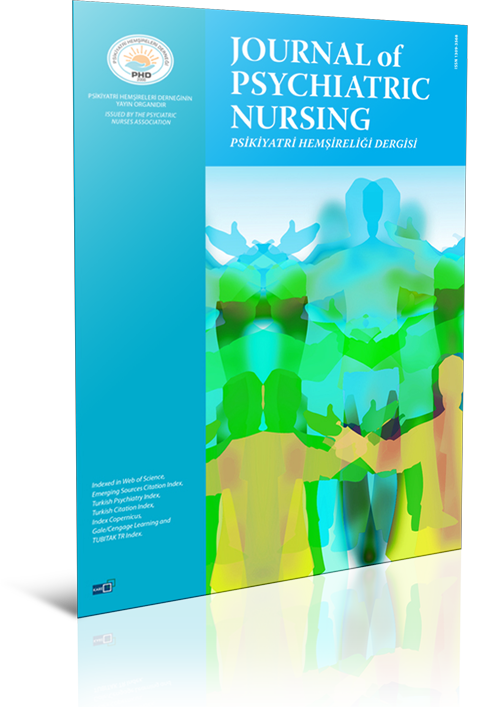
The relationship between insight and quality of life in patients with schizophrenia
Zeynep Güngör1, Özlem Şahin Altun21Department of Psychiatric Nursing, Recep Tayyip Erdoğan University Training and Research Hospital, Rize, Türkiye2Department of Psychiatric Nursing, Atatürk University Faculty of Nursing, Erzurum, Türkiye
INTRODUCTION: The study was conducted to determine the relationship between insight and quality of life levels of individuals diagnosed with schizophrenia.
METHODS: The data of this descriptive and correlational study were collected at a community mental health center (CMHC) in a province located in the Black Sea Region of Türkiye between February 2021 and July 2021. The population of the study consisted of 224 patients who were registered to the CMHC and diagnosed with schizophrenia according to DSM-V diagnostic criteria between the specified dates. According to the sample calculation for a known population, the minimum number of people to be included in the sample was calculated as 141 (confidence interval: 95%, margin of error: 5%). However, considering the possibility of withdrawals and/or losses during the study, we decided to include more people. Thus, the study was completed with 148 patients who volunteered to participate in the study and met the inclusion criteria. The three tools used to collect the data were the Sociodemographic Data Form prepared by the researcher, Birchwood Insight Scale (BIS), and Quality of Life Scale for Patients with Schizophrenia (QLSPS). Data were analyzed using the Statistical Program for the Social Sciences 22. In the analysis of the data, the ShapiroWilk test was used to determine whether the data were normally distributed. In the analysis of the data, numbers, arithmetic mean, percentile distributions, and standard deviation were used. While Pearsons correlation analysis was used to determine the relationship between the scales, the Cronbachs alpha coefficient was used to calculate the reliability coefficients of the scales.
RESULTS: According to the study findings, the mean scores the patients obtained from the overall BIS and the QLSPS were 4.16±1.63 and 76.93±14.84, respectively. According to the analysis of the relationship between the sub-dimensions of the BIS and the sub-dimensions of the QLSPS, there was a negative and weak correlation between the mean scores obtained from the overall BIS and its Being Aware of the Symptoms and Being Aware of the Disease sub-dimensions and the mean scores obtained from the overall QLSPS and its interpersonal relationships sub-dimension. There was a negative, significant, and weak correlation between the mean score for the overall BIS and the mean scores for the occupational role, daily use of belongings, and activities sub-dimensions of the QLSPS (p<0.05).
DISCUSSION AND CONCLUSION: The patients had a low level of insight and a high level of quality of life. A relationship was determined between the mean scores the participants obtained from the BIS and the mean scores that they obtained from the QLSPS.
Makale Dili: İngilizce


















